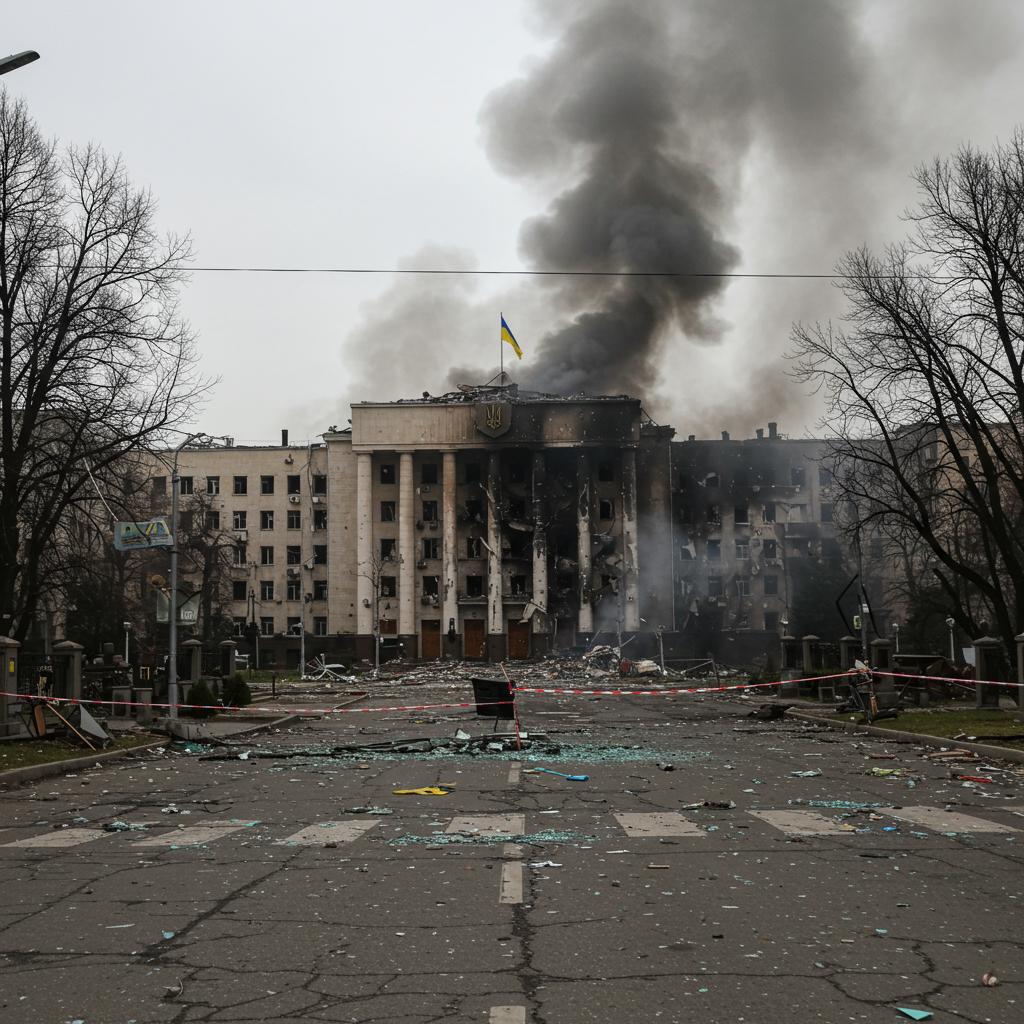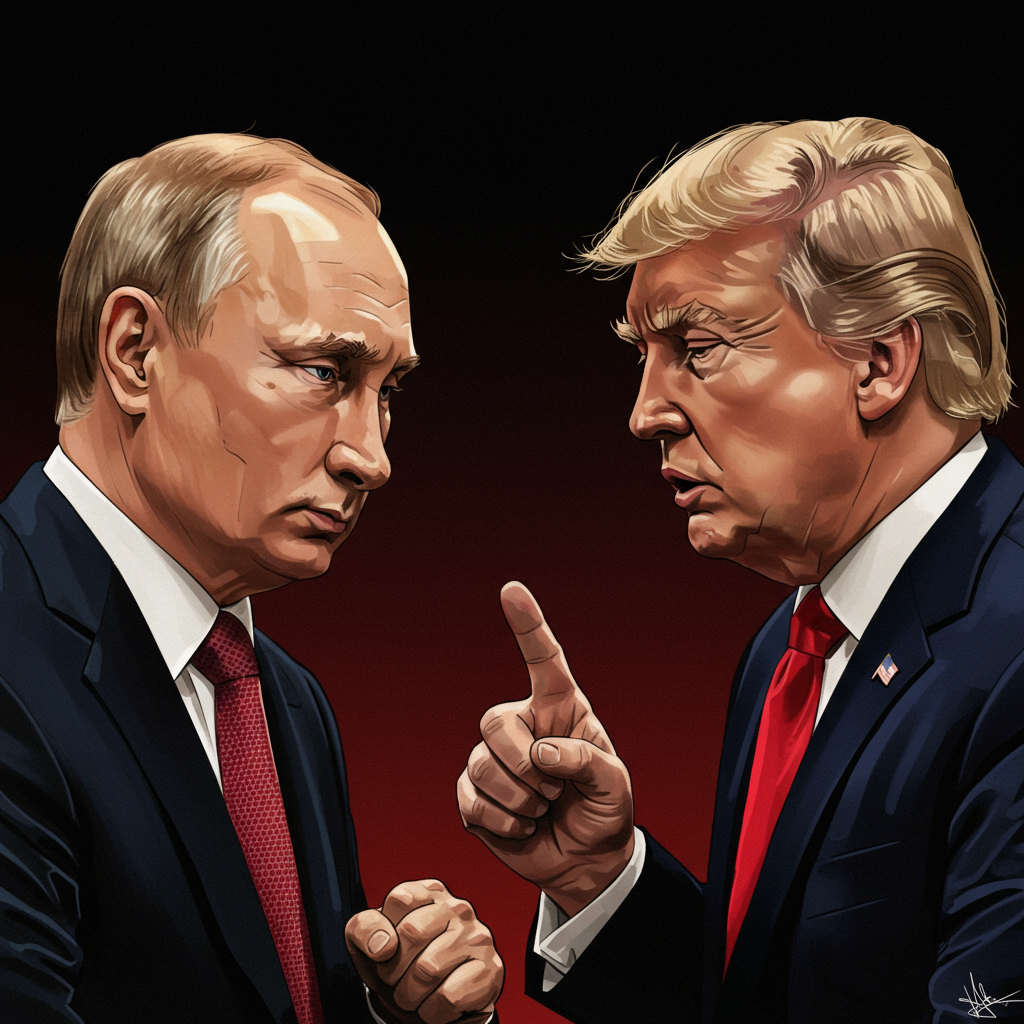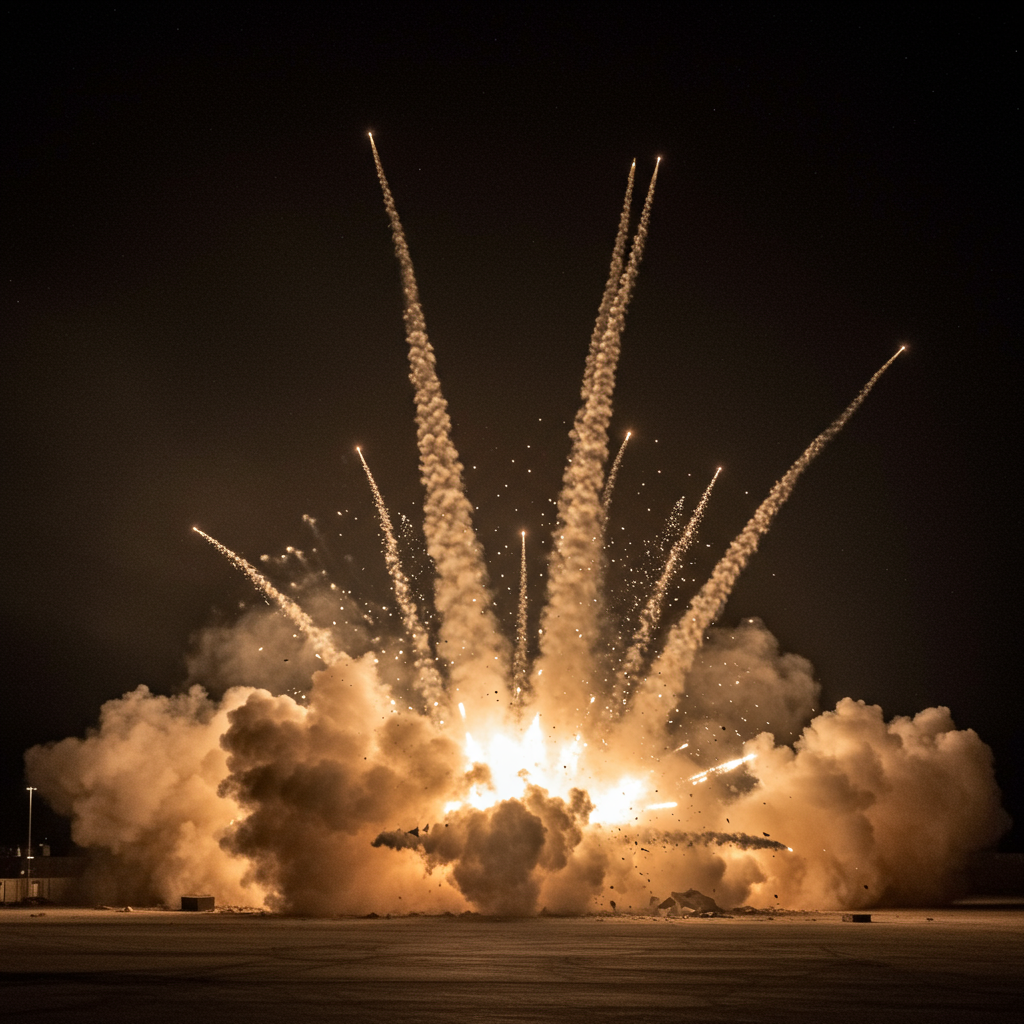Kyiv, Ukraine — In an unprecedented escalation, Russia launched its largest drone and missile assault of the ongoing war against Ukraine on Sunday, September 7, 2025. This devastating aerial attack notably struck and damaged a key government building in Kyiv, marking the first time the capital’s heavily guarded central district has been impacted since the full-scale invasion began in 2022. The widespread bombardment resulted in tragic civilian casualties, including children, and sparked renewed international condemnation, intensifying calls for a decisive global response.
This major Russia Ukraine drone attack sent shockwaves across the globe, highlighting the relentless nature of the conflict. The coordinated offensive involved an overwhelming number of Iranian-designed Shahed exploding drones and several cruise and ballistic missiles. Ukrainian authorities confirmed the significant scale of the assault, with air raid sirens blaring for hours across the country, as defenses scrambled to intercept incoming threats. The incident underscores Russia’s unwavering aggression despite ongoing international efforts to de-escalate the conflict and mediate peace.
Unprecedented Scale of the Aerial Onslaught
Ukrainian military officials reported that Russia unleashed an astonishing 805 Iranian-designed Shahed exploding drones and decoys across the nation. This figure dwarfs previous large-scale attacks, surpassing the July 9, 2025, assault which involved 728 drones. In addition to the massive drone barrage, Russia also fired 13 cruise and ballistic missiles. Ukraine’s air defense forces achieved significant interceptions, downing 747 drones and four missiles. However, a total of nine missiles and nearly 60 drones successfully evaded defenses, causing extensive damage and casualties across 37 locations.
The sheer volume of munitions represents a critical shift in Russia’s air campaign strategy. The use of decoys alongside combat drones aims to overwhelm and deplete Ukrainian air defense systems. This tactic forces Ukraine to expend precious interceptor missiles, gradually eroding its capacity to protect vital infrastructure and population centers. Experts note that this surge in Shahed drones indicates a sustained, high-intensity offensive designed to inflict maximum disruption and terror.
Direct Strike on Kyiv’s Government Core
For the first time since the 2022 invasion, a key building within Kyiv’s heavily fortified government district sustained direct damage. Smoke was seen billowing from the roof and upper floors of the building housing Ukraine’s Cabinet ministers’ offices. Prime Minister Yulia Svyrydenko confirmed the damage, stating, “We will restore the buildings, but lost lives cannot be returned.” The deliberate targeting of a Kyiv government building signifies a profound escalation, as such central administrative targets had previously been largely spared from direct strikes. This move could be interpreted as a symbolic attack on Ukrainian statehood and resilience.
Beyond the government headquarters, the capital bore the brunt of the assault. Residential areas were severely impacted, with drone debris and direct hits causing widespread destruction. Several floors of a nine-story residential building in the Sviatoshynskyi district were partly destroyed. Fires ignited in a 16-story apartment building and two other structures due to falling drone debris. The city’s military administration head, Timur Tkachenko, emphasized that Russia was “deliberately and consciously striking civilian targets,” a claim supported by the broad damage to non-military infrastructure. Tragically, the attacks claimed the lives of at least two people in Kyiv, including a mother and her three-month-old baby, reportedly thrown onto the street by a drone explosion’s pressure wave. At least 20 people were hospitalized in the capital alone, including a pregnant woman.
Widespread Impact Across Ukraine
The devastating drone assault extended far beyond Kyiv, causing damage and casualties in numerous other Ukrainian cities. Explosions and destruction were reported in Odesa, Kharkiv, Dnipro, Zaporizhzhia, Kryvyi Rih, Kremenchuk, and Sumy. In Odesa, civilian infrastructure and residential buildings suffered damage, with apartment blocks catching fire. Kremenchuk experienced dozens of explosions, leading to power outages in some areas. A crucial bridge over the Dnipro River in Kremenchuk was also reportedly hit.
Zaporizhzhia saw at least 15 people injured in a drone strike, accompanied by the destruction of residential buildings. In Sumy, one person was killed, adding to the grim toll. The extensive geographical spread of the attacks demonstrates Russia’s capacity for wide-ranging bombardment and its intent to sow terror and disrupt daily life across the entire country. These strikes highlight the urgent need for enhanced air defense capabilities across all of Ukraine.
International Outcry and Stalled Peace Efforts
The international community swiftly condemned Russia’s record-setting attack. Ukrainian President Volodymyr Zelenskyy labeled the assault a “deliberate crime and prolongation of the war,” suggesting that “real diplomacy could have already begun long ago” if there were genuine political will to end the conflict. He confirmed coordination with French President Emmanuel Macron to ensure an “appropriate response” and strengthen Ukraine’s defenses. Prime Minister Svyrydenko echoed calls for increased sanctions, particularly targeting Russian oil and gas revenues.
President Donald Trump, despite ongoing efforts by his administration to mediate peace talks, expressed increasing frustration with Russian President Vladimir V. Putin. Putin has given little indication of softening his maximalist demands for a settlement, even as Russian forces continue to bombard Ukraine, targeting civilian areas and critical infrastructure. Speaking in Washington, Mr. Trump indicated his readiness to move to a a “second phase of sanctions” against Russia, citing its failure to agree to a cease-fire deal. He also mentioned that “secondary sanctions” had already been imposed on countries like India for doing business with Russia. However, past threats of direct punitive actions against Russia itself have often passed without consequence, leading to skepticism about the immediate impact of these new threats.
Other global leaders also reacted forcefully. French President Macron accused Russia of “striking indiscriminately,” declaring that Moscow “is locking itself ever deeper into the logic of war and terror.” European Commission President Ursula von der Leyen criticized the Kremlin for “mocking diplomacy, trampling international law, and killing indiscriminately,” reaffirming Europe’s full support for Ukraine. British Prime Minister Keir Starmer condemned the “cowardly strikes,” stating they prove Putin is “not serious about peace.” The extensive nature of this Russian aerial attack and its impact on Kyiv’s government quarter underscore the continuing urgency of a unified and robust international response to support Ukraine and pressure Russia.
Broader Geopolitical Implications
The September 7, 2025, Russia Ukraine drone attack comes at a critical juncture, amidst stalled diplomatic momentum and waning hopes for an immediate peace agreement. President Trump’s repeated frustrations with Putin’s intransigence, combined with the lack of direct action against Russia despite escalating bombardment, paint a complex picture of international diplomacy. The timing of the attack, following Putin’s recent appearance with other authoritarian leaders in China, may also signal Moscow’s continued defiance of Western pressure.
Ukrainian officials, meanwhile, continue to call for bolstered air defenses and further security guarantees from their international partners. Ukraine’s Defense Minister Denys Shmygal announced that discussions would focus on “strengthening air defense and enhancing Ukraine’s capability to respond with strikes deep into the aggressor’s territory.” These statements suggest Ukraine’s determination to not only defend its territory but also to actively counter Russian aggression. The ongoing conflict also sees Ukraine launching its own retaliatory drone strikes against Russian targets, including oil refineries and energy infrastructure, demonstrating a reciprocal escalation of hostilities.
Frequently Asked Questions
What made Russia’s September 2025 attack on Ukraine historically significant?
The September 7, 2025, attack was historically significant for two primary reasons: its unprecedented scale and its target. Ukrainian authorities confirmed it was Russia’s largest drone assault of the war, deploying 805 Iranian-designed Shahed drones, far exceeding previous attacks. Crucially, this offensive also marked the first time a key government building in Kyiv’s heavily guarded central district sustained direct damage since the full-scale invasion began in 2022, signifying a major escalation in Russia’s targeting strategy and a symbolic blow to Ukrainian statehood.
Which Ukrainian cities were affected by Russia’s record drone and missile assault?
While Kyiv bore the brunt of the attack, with its government district and residential areas severely impacted, the record-breaking drone and missile assault affected numerous cities across Ukraine. Explosions and damage were reported in Odesa, Kharkiv, Dnipro, Zaporizhzhia, Kryvyi Rih, Kremenchuk, and Sumy. Civilian infrastructure, residential buildings, and critical infrastructure like bridges were hit, leading to widespread destruction, power outages, and tragic civilian casualties, highlighting the extensive reach of Russia’s aerial campaign.
How have international leaders, including President Trump, reacted to this major escalation?
International leaders strongly condemned the Russian aerial attack. Ukrainian President Zelenskyy called it a “deliberate crime and prolongation of the war,” urging greater international resolve. US President Donald Trump, expressing frustration with Putin’s refusal to soften demands, indicated his readiness to move to a “second phase of sanctions” against Russia, though past threats haven’t always materialized into direct action. French President Macron and European Commission President von der Leyen also denounced the “indiscriminate killing” and reaffirmed support for Ukraine, emphasizing the need for reinforced defenses and tighter sanctions against Moscow.
Looking Ahead: The Path to Peace Remains Challenging
The September 7, 2025, Russia Ukraine drone attack serves as a stark reminder of the war’s brutal reality and its profound human cost. The deliberate targeting of government infrastructure in Kyiv, combined with widespread civilian casualties, marks a concerning escalation in Russia’s tactics. Despite appeals for peace, the Kremlin shows little sign of de-escalation, complicating any immediate path towards a negotiated settlement. The international community faces renewed pressure to bolster Ukraine’s defenses, enforce stricter sanctions, and demonstrate a unified stance against aggression. The resilience of the Ukrainian people, alongside continued global support, will remain critical in navigating the challenging period ahead, as the conflict continues to shape geopolitical dynamics.




